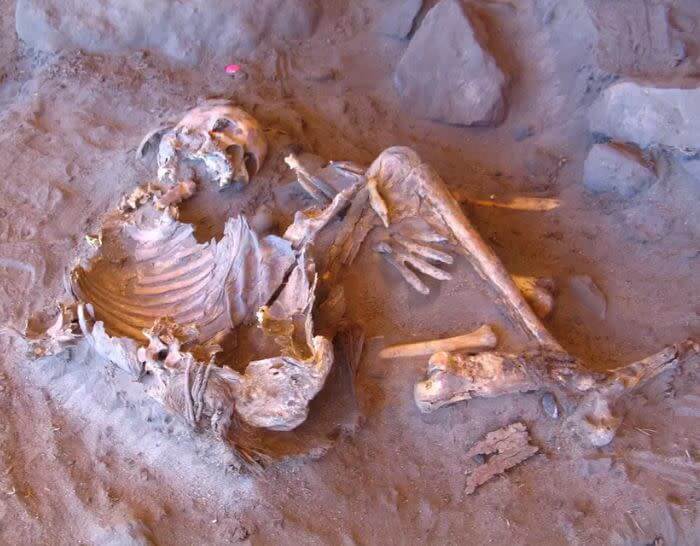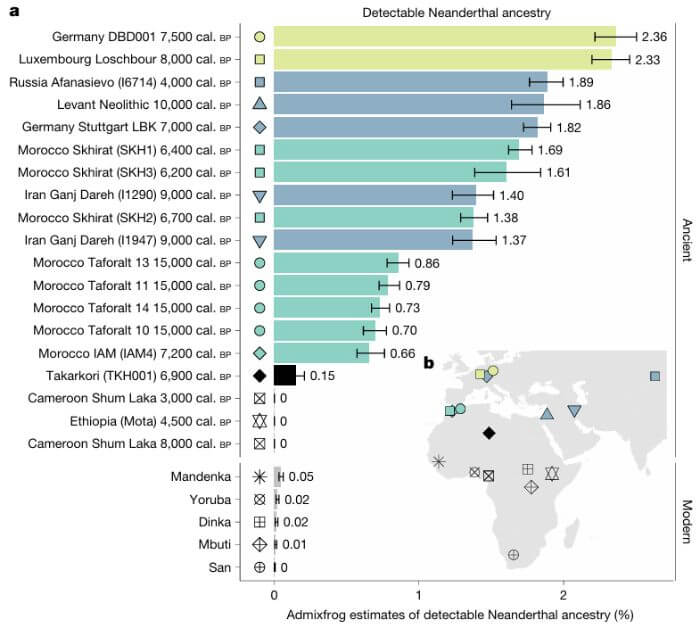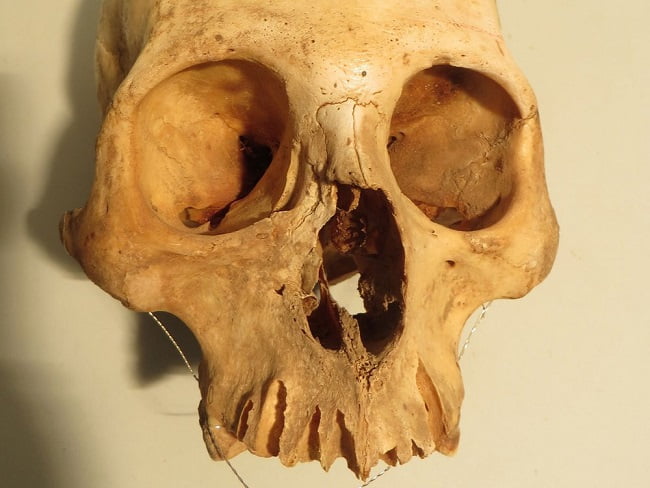
Once Lush Sahara Was Home To A Surprisingly Unique Group of Humans
Then the sands came.
By: Tessa K. | Science Alert
Currently a harsh, arid sand-scape, it’s hard to believe the Sahara was once studded with sparkling water bodies that nourished lush green savannas. But the remains of human pastoralists and their livestock have been found in the region’s rock shelters.
A new genetic analysis suggests the humans who called this 7,000-year-old version of the Sahara home largely kept to themselves, genetically speaking.
Max Planck Institute evolutionary anthropologist Nada Salem and colleagues sequenced the ancient DNA of two female individuals buried at the Takarkori rock shelter in what’s now south-western Libya.

The 7,000-year-old Takarkori women shared the most genes with 15,000-year-old foragers from Morocco, suggesting a long-standing, stable human population existed in North Africa before and during the Saharan humid period.
“Evidence from ancient lake deposits, pollen samples, and archaeological artefacts confirm human presence, hunting, herding, and resource gathering in the currently arid desert region,” Salem and team explain in their paper.
This shared Saharan human lineage took a different path from those in sub-Saharan Africa around the same time that modern humans first left the continent more than 50,000 years ago.
Oldest Human Ancestors May Have Evolved Nine Million Years Ago In Turkey
The lineage then remained relatively isolated for many thousands of years, with only small traces of genes entering from the Levantine region to the northeast – including some from Neanderthals.
“Our findings suggest that while early North African populations were largely isolated, they received traces of Neanderthal DNA due to gene flow from outside Africa,” says anthropologist Johannes Krause, from the Max Planck Institute in Germany.
The Takarkori individuals had less Neanderthal DNA than the Moroccan foragers, but significantly more than those from further south of Africa. That suggests that something stemmed the gene flow from Europe from spreading beyond the Sahara region.

Archaeological evidence suggests that the Takarkori people were early herders of livestock, unlike the older Moroccan lineages who were foragers. That they picked up this practice without much gene exchange is also telling.
“This discovery reveals how pastoralism spread across the Green Sahara, likely through cultural exchange rather than large-scale migration,” Salem explains.

The diverse mix of ecosystems, including wetlands and mountains, may have provided a southern barrier for migration, the researchers suspect.
“By shedding light on the Sahara’s deep past, we aim to increase our knowledge of human migrations, adaptations, and cultural evolution in this key region,” concludes Sapienza University archaeologist Savino di Lernia.
This research was published in Nature.
* * *
You’ll Love This One …
Human Remains From The Chilean Desert Reveal Its First Farmers Fought To The Death
Around 1,000 B.C., some foragers decided to try farming in one of the driest spots on Earth, the Atacama Desert, which lies between the Andes Mountains and Pacific Ocean, in what’s now northern Chile. When farming began, lethal violence surged and remained high for centuries. The desert inhabitants attacked and slayed one another with maces, knives and hunting weapons, probably fighting over scarce water and fertile land.
That’s according to a new analysis of human remains from graves between 3,000 and 1,400 years old, which included dozens of individuals with hair, flesh and organs still intact, due to the desert aridity. The victims suffered snapped ribs, broken collarbones, facial mutilation and puncture wounds in the lungs, groin and spine. At least half of the injuries look like they were fatal blows.
“The patterns and frequencies of the lethal trauma… is astonishing,” says Tiffiny Tung, a Vanderbilt University archaeologist, who was not involved in the research.
* * *
READ MORE: Study Reveals How Ancient Humans Escaped Climate Extinction 900,000 Years Ago
Interesting! 700,000-Year-Old Skull Found In Greece Completely Shatters ‘Out of Africa Theory’
Telegram: Stay connected and get the latest updates by following us on Telegram!
We’d love to hear from you! If you have a comment about this article or if you have a tip for a future Collective Spark Story please let us know below in the comment section.


What do you think this discovery says about how ancient cultures shared ideas without mixing genetically?